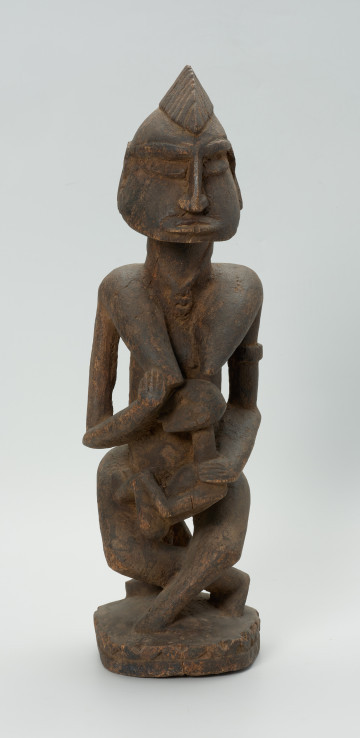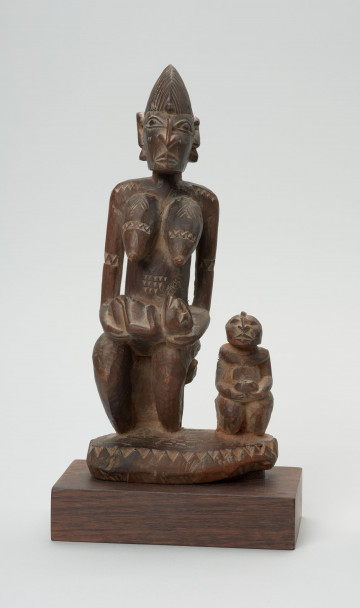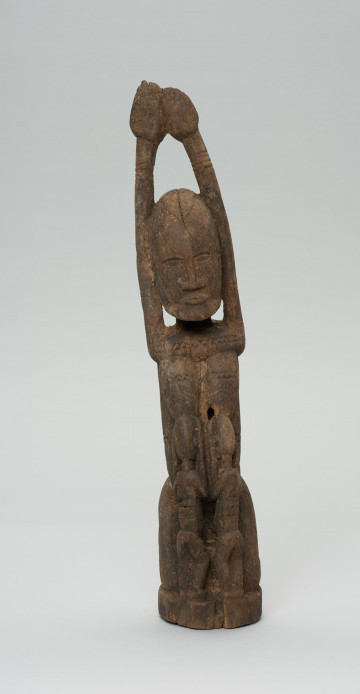
Figure - woman with child
między 1976 — 1984
National Museum in Szczecin
Part of the collection: Collection of Dogonian art
Dogon art abounds in depictions of a woman and child. They symbolically refer to maternal love and female fertility, which are highly valued in Africa. The ability of women to bear children is one of the most important issues not only for the Dogon but in all traditional African communities. The future of the family and the whole community depends on the fertility of women. Procreation, the appearance of successive generations, is a way of building a connection between the souls of the ancestors and their descendants. According to Dogon beliefs, during intrauterine life, a human becomes similar to a fish and thanks to this, he can develop safely and properly in foetal waters. Throughout life, a human is a developing Nommo. At each life stage, a different part of the water deity develops in him. In infancy, it is the head, when he begins to walk and the little human becomes independent the liver develops, at the time of engagement - the feet, and after marriage - the arms. The old human is already a perfect Nommo, representing humanity and the whole universe. The birth of a child is a great event for the family. The infant constantly accompanies the mother, carried by her on her back, wrapped in a rectangular cloth. When the baby starts to walk, the mother often entrusts it to her older children or younger siblings. Children quickly begin to perform various duties. However, their tasks are not difficult, and parents ensure that they do not work beyond their strengths. Childhood is, therefore above all, a period of play. Like other children who do not have access to industrial toys, the Dogon children are very inventive in creating their toys from materials within reach, such as a stick or a millet stalk.
Ewa Prądzyńska
Author / creator
Dimensions
cały obiekt: height: 77,5 cm, width: 16,5 cm
Object type
sculpture
Creation time / dating
Creation / finding place
Identification number
Location / status

między 1976 — 1984
National Museum in Szczecin

między 1951 — 2000
National Museum in Szczecin

między 1951 — 2000
National Museum in Szczecin
DISCOVER this TOPIC
National Museum in Szczecin
DISCOVER this PATH
Educational path